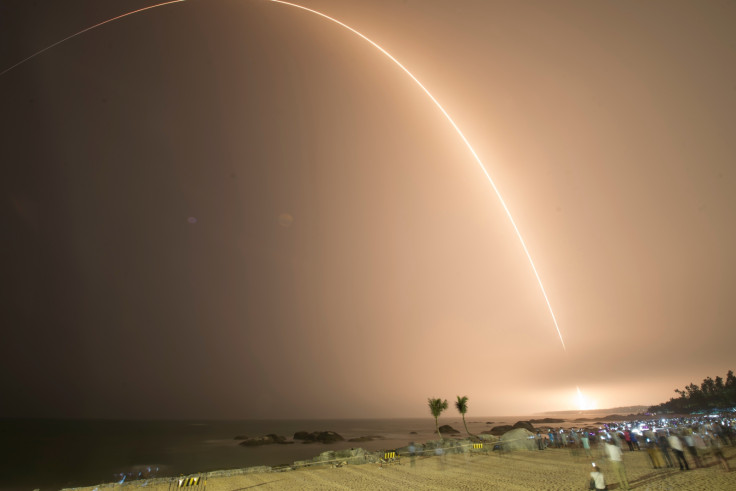Unmanned Chinese cargo ship Tianzhou-1 docks with Tiangong-2 space lab
China hopes to have its own crewed space station in orbit by 2022.
An unmanned Chinese cargo ship has successfully docked with an orbiting space lab, which it is hoped will become the Communist nation's first manned space station by 2022.
Tianzhou-1 blasted off from a launchpad in the country's Hainan province last Thursday (20 April) and made contact with Tiangong-2 at 4.16am GMT, completing the docking process at 4.23am.
Unlike American unmanned rockets built by SpaceX and Orbital Sciences Corporation, Tianzhou-1 is large enough to carry fuel as well as supplies to the space lab, which went into orbit in 2016.
According to China's official Xinhua news agency, Tianzhou-1 is just over 10 metres in length and can supply 6.5 tonnes (14,330lb) of supplies, including food and fuel, to the space lab and its crew. Despite carrying twice as much as rival ships, it is claimed to be the lightest cargo ship ever made.
Australia-based space expert Morris Jones told the South China Morning Post (SCMP) the Tianzhou-1 was a massive achievement for China. "Only Europe, Russia and China have developed freighters that can refuel a space station. America has not done this," he said.
"Tianzhou is a large spacecraft with more volume than freighters from the USA and Russia. It can thus carry more cargo than some other freighters."
Russia's Progress cargo spacecraft is 7.3m long and can carry a 2.4 tonne (5,300lb) payload, while Nasa's 6.3m American Cygnus cargo spacecraft can carry up to 3,500 kg (7,700 lb). Until 2013, the European Space Agency (ESA) used the Automatic Transfer Vehicle (ATV) to deliver cargo into space. These 10m long craft could hold 7.6 tonne (16,903 lb) of cargo. The ESA and Nasa are developing a replacement for the Cygnus ATV. None of these craft were able to refuel to survive reentry to Earth's atmosphere.
"Different versions [of Tianzhou-1] are designed to carry different combinations of pressurised cargo, which goes straight to the interior of the space station, and unpressurised cargo, which is unloaded in open space and attached to the exterior of the space station," Jones added.
The craft will conduct experiments in space then remove waste from the lab and burn up on re-entry to Earth, newsfusion reports.

© Copyright IBTimes 2024. All rights reserved.






